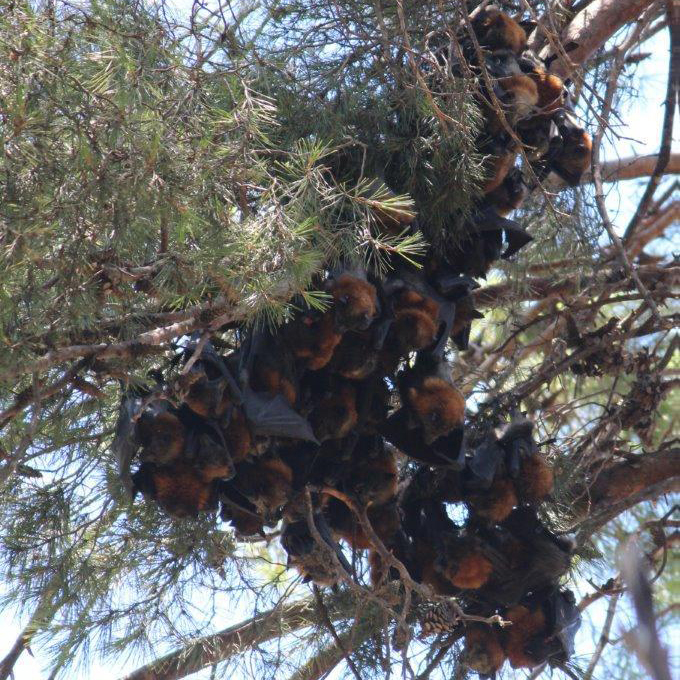During the day, flying-foxes roost in patches of trees, known as camps, which may contain tens to thousands of individuals. As a result, they can be susceptible to extreme weather conditions.
Heat stress - or hyperthermia - occurs when the body produces more heat than it can dissipate. Flying-foxes are generally affected when temperatures exceed 42°C and roost vegetation in their camps doesn't provide enough shade refuge. Post-mortems suggest that flying-foxes mainly die from resulting heat shock i.e. the body can no longer function effectively.
The severity of the effect of an extreme heat event on flying-foxes is likely to be reduced by:
- enough understorey and mid-storey vegetation for shelter from extreme heat
- dense crown vegetation to provide shade
- access to enough water.
Severity is likely to be increased when camps are disturbed at critical times during an extreme heat event, potentially forcing individuals to leave their cooler microhabitats and become fully exposed to the extreme heat.
Visit Responding to heat stress in flying-fox camps for information for licensed wildlife carers responding to heat stress events.



